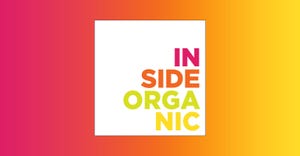Considerations for getting into the snacks game
Demand for small bites translates to big opportunities in the snacks category.

Demand for small bites translates to big opportunities in the snacks category. Over the past few decades, snacks have transformed from occasional indulgences to everyday necessities. The NPD Group’s recent “The Future of Snacking” report found Americans consumed almost 386 billion snacks in the last year alone; however, the snacking dynamic is changing and many consumers are replacing the traditional three square meals a day with smaller, more frequent eating occasions.
This new lifestyle puts heavy emphasis on convenience, a factor that has become increasingly important to the way consumers across the globe live their lives and cope with the chaos around them. Enter snacks, the sixth-largest category in the natural/organic channel, worth US$7.5 billion in 2018, according to Nutrition Business Journal. Further, the introduction of new products with a focus on functional ingredients is helping drive the global snack market that is forecasted to reach US$620 billion by 2021, according to Research and Markets. While snacks encompass a wide swath of product categories—from sweet to savory, specialty to frozen treats—it’s salty snacks such as potato chips, corn chips, tortilla chips, popcorn, pretzels, etc. that are expected to have the highest market growth in the coming years, noted the research firm.
According to Mintel’s 2019 “US Snacking Motivations and Attitudes Market Report,” 95% of adults snack at least once a day, 70% snack at least twice a day, and consumers who snack at least four times a day are significantly increasing—with Millennials leading the pack. Mondelēz International’s 2019 “State of Snacking” report found 53% of adults say quick, on-the-go bites are more suited to their lifestyle than full meals; 71% say snacking gives them time to connect with themselves; and 53% look forward to the snacks in their day more than the meals.
The report also found snacks are just as important to global adults’ mental health (71%) and emotional well-being (70%) as their physical well-being. What’s more, those in developing markets are especially likely to seek holistic snacks that are supportive of gut health (39%), brain-boosting (34%) and mood-enhancing (33%).
For many consumers, a better-for-you snack is marked by what it lacks—gluten, allergens, unhealthy fats, added sugars or sodium. Yet, many of these ingredients have functional attributes; so formulators are challenged with meeting taste, texture and clean label expectations while using suitable replacements, which isn’t always easy.
Learn more about each of these considerations in the full article in the Food & Beverage Insider Formulating strategies for healthy snacks – digital magazine.
About the Author(s)
You May Also Like






